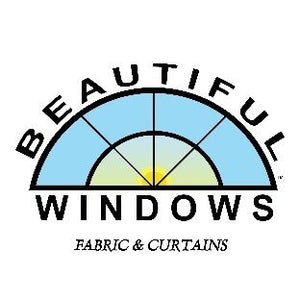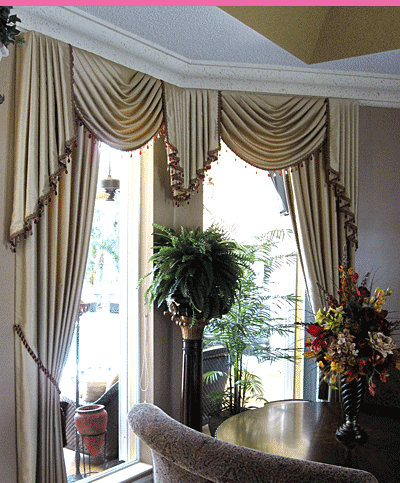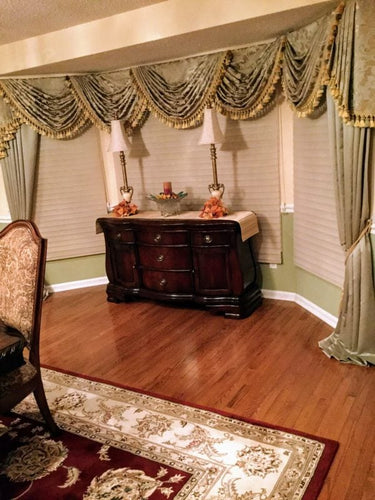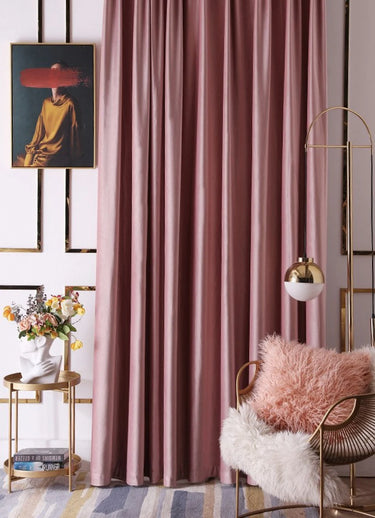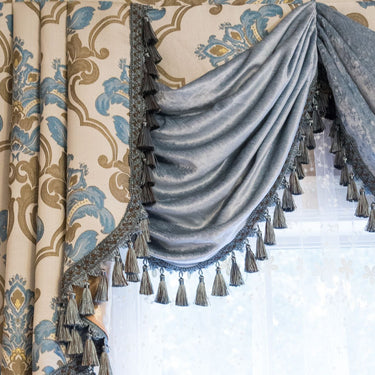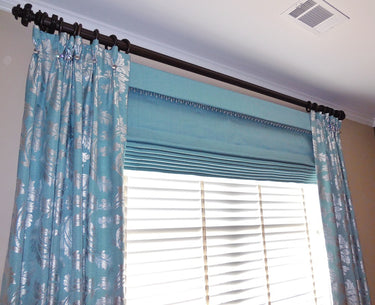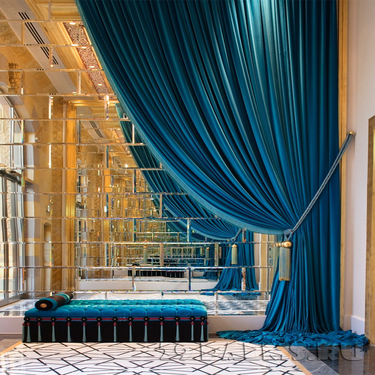Trending Now
Popular Products
- $25.99
- $25.99
- Unit price
- / per
- $44.99
$59.99- $44.99
- Unit price
- / per
- $46.99
$36.40- $46.99
- Unit price
- / per
What are Double Rubs—For Window Curtains—Beautiful Windows Elgin
Double rubs are determined through a mechanized test called the Wyzenbeek Test or the Martindale Test (European Version). This test is regarded as the standard of measuring abrasion resistance for fabric in North America. A piece of cotton duck is stretched over a mechanical arm and passed back and forth over the test fabric in each direction. Each back-and-forth motion is one double rub. The cotton duck passing over the fabric simulates the wear of a fabric being used on your furniture. The test is run in sets of 5,000 double rubs until the fabric shows “noticeable wear” or yarns break.
Delicate Duty: Less than 3,000 double rubs. Recommended for drapery, bedding, pillows, and accessories.
Light Duty: 3,000-9,000 double rubs. Suitable for light duty upholstery, drapery, bedding, and pillows.
Medium Duty: 9,000-15,000 double rubs. Good multi-purpose fabric for upholstery, cushions, drapery, and pillows.
Heavy Duty: 15,000-30,000 double rubs. Great for residential upholstery, family room furniture. Very durable and many choices.
Extra-Heavy Duty: 50,000+ double rubs. Best upholstery fabric for high traffic use in residential and commercial setting.
While double rubs are a good indication of durability, contents, weave and dye process also play a roll.
What is Up the Roll vs Railroaded?
Up-the-Roll – Describes the orientation of a pattern’s direction. When looking at an up-the-roll pattern, the warp yarns are in the vertical direction, while the filling yarns are in the horizontal direction. Print fabrics run up the length of the roll. Versatile design and can be used for furniture, drapery, bedding, cushions, pillows and other projects.
Railroaded – Describes the orientation of a pattern’s direction. When looking at a railroaded pattern, the filling yarns are in the vertical direction, while the warp yarns are in the horizontal direction. Print fabrics run across the roll. Some upholstery professionals prefer railroaded patterns, while others prefer up-the-roll patterns for their application. In some cases, an upholsterer may prefer a railroaded pattern in order to avoid excessive seams and waste fabric. Mainly used for furniture applications, cushions and pillows.
Common Fabric Terms
Up The Roll
Railroaded
Repeat – Complete unit of pattern for design. Repeats vary in size considerably, depending on the weave, type of material, texture, and the use of the cloth. Measured vertically and horizontally, repeat information is important to determine how to layout the fabric for furniture and draperies, cushions, pillows etc.
Piece Dyed Fabric – Fabric that is dyed after it is woven, in full piece form. The greige goods for piece dying can be cotton, synthetic or blends.
Greige Goods – Term used to describe fabric woven on a loom with warp and filling yarns that have not been dyed. The woven fabric may be dyed later after weaving, as in piece dyed fabrics.
Polyester Fabrics - Polyester fibers are incredibly strong, meaning they don't tear, stretch, or peel easily like cotton and other natural fibers. This strength means polyester clothing can easily handle abrasion from machine-washing and doesn't require special care. Polyester's long, stable polymers make this fabric strong and resilient. Because of this, polyester also holds its shape well and doesn't easily get stretched out. Despite its strength, 100% polyester is a supple, lightweight fabric that works well for many styles of curtains and drapes.
Woven Fabrics – Textiles in which the design and colors are created in the weaving process with solution dyed yarns.
Printed Fabrics – Textiles with design elements or motifs which are applied to the surface of the fabric with colorants such as dyes or pigments. This is opposed to woven fabrics in which the design is created in the weaving as part of the structure of the textile itself. Many different types of printing methods exist, some of which include rotary screen printing, heat transfer printing, block printing, and digital printing.
Cotton- Cotton is a staple fiber, which means it is composed of different, varying lengths of fibers. Home décor. Cotton is also used throughout the home for upholstery and curtains.
Solution Yarn Dyed Fabric – Fabric woven with yarns that have been dyed prior to the weaving of the goods. This is as opposed to piece dyed fabrics, which are woven with undyed warp and fill yarns.
Yarn – A generic term for an assemblage of fibers or filaments, either natural or man-made, twisted together to form a continuous strand that can be used for weaving, knitting, braiding, or the manufacture of lace, or otherwise made into a textile material.
Brocade – Brocade was originally an elegant, heavy silk fabric with a floral or figured pattern woven with gold or silver thread, produced in China and Japan. Currently, any of the major textile fibers may be used in a wide range of quality and price.
Brocatelle – A fabric similar to brocade but with designs in high relief, made on a jacquard loom. The fabric usually has a firm texture and high yarn count. The pattern, a distinctive blistered or puffed appearance, generally is formed by warp satin floats. Uses include draperies and upholstery.
Chenille – A fuzzy yarn with a pile which resembles a caterpillar. Used mainly for decorative fabrics, embroidery, tassels, and rugs. Sometimes used broadly to define a fabric woven from chenille yarns.
Crewel – A true crewel fabric is embroidered with crewel yarn (a loosely twisted, two-ply wool) on a plain weave fabric. Traditional crewel fabrics are hand-woven and embroidered in India. The design motif for crewel work is typically outlines of flowers, vines, and leaves, in one or many colors. Modern embroidery technology and inventive designers create many variations of the traditional “crewel” look.
Damask – Originally a firm, glossy Jacquard-patterned fabric made in China and brought to the Western world by Marco Polo in the 13th century. Damascus was the center of fabric trade between East and West, hence the name. True Damask fabrics are reversible and are characterized by a combination of satin and sateen weaves. Many variations of the Damask design are available in screen prints and woven fabrics. Used mainly for curtains, draperies, and upholstery.
Gros point – A fabric which features large points of yarn on the surface of the fabric.
Jacobean – Originally, a type of English embroidery with a strong oriental influence, first used during the Restoration period. Common motifs are branches, ornamented in color with fruits and flowers and birds. Jacobean designs are found most frequently as upholstery and drapery fabrics.
Jacquard – Intricate method of weaving invented by Joseph Marie Jacquard in the years 1801-1804, in which a head motion at the top of the loom holds and operates a set of punched paper cards, according to the motif desired. Each punched perforation controls the action of one warp end for the passage of one pick. In modern looms, the punched cards have been replaced by computers, or the commands are directly downloaded from a network computer.
Matelassé – A rather soft, double cloth or compound fabric. Matelassé gives a blistered, puckered, quilted, or wadded effects depending on the cloth construction used. Made on Jacquard looms, the heavier constructions are used for coverlets, pillows, and upholstery.
Moiré – A textile finish which creates lustrous or dull effects on the surface of a woven fabric. Moiré effects are achieved when crushed and the uncrushed parts of the fabric reflect light differently in a rippled, or watermarked, pattern. Moiré fabrics are used for draperies, bedspreads, and light upholstery.
Paisley– An oriental pattern motif which is shaped like a teardrop, rounded at one end with a curving point at the other. Generally, inside the teardrop shape contains many abstract designs, many of Indian or oriental origin. Traditionally used on cashmere shawls imported to Europe from India, it was an important decorative motif in imitation cashmere shawls made in Paisley, Scotland and it is from this usage that the name is derived.
Liseré – Term which refers to a specific type of fabric construction involving a supplementary warp. This supplementary warp, usually multi-colored, can be used to add color and detail in selected areas on the face of the fabric. Where the liseré effect is not seen on the face of the fabric, it is hidden along the back as loosely tacked “floats.” Liseré effects are in some ways similar to a tissue pick, however liseré occurs in the warp direction. Most classic liseré designs are stripes, frequently used on wing-back chairs or in formal settings.
Velvet – A warp pile cloth in which rows of short cut pile stand so close together as to form an even, uniform surface, appealing in look and with soft hand. First made of all silk, many different fibers are now used in velvet constructions. When the pile is more than one-eighth of an inch in height, the cloth is then called plush.
Tapestry – Originally, ornamental Oriental embroideries in which colored threads of wool, gold, silk or silver were interspersed for adornment. In the textile industry, a tapestry warp differs from a typical solid colored warp in that it is multicolored. “True” tapestries have at least 6 different colors in the warp, but tapestry-type looks can be achieved with four-color warps. Because of the beautiful, multi-colored detail effects, tapestry constructions are popular in a range of styles from scenic novelties to intricate florals.
Ticking Stripe – A narrow two-color stripe reminiscent of a design typically used in old style mattress covers
- Choosing a selection results in a full page refresh.
